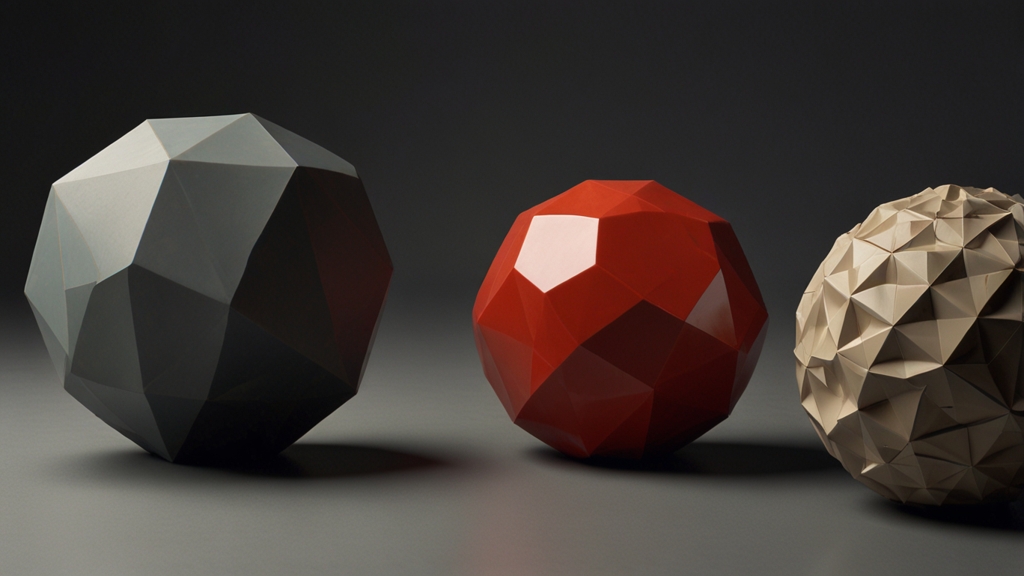Bizarre Geometric Shapes You've Never Heard Of
Geometry often brings to mind familiar shapes like circles, squares, and triangles. However, the world of shapes extends far beyond these conventional forms. There exists a treasure trove of bizarre and wonderful geometric shapes that often go unnoticed. Whether you are a math enthusiast or simply curious, dive into this fascinating exploration of some of the most peculiar geometric shapes you've never heard of.
The Asscher Polygon
One of the lesser-known geometric shapes is the Asscher polygon, which was first described in the early 20th century. The Asscher polygon is a decagonal shape—meaning it has ten sides—but it doesn't resemble your typical decagon. Instead, it has a highly complex and symmetrical structure. This shape is notably used in the design of certain gemstones and architectural elements due to its intriguing aesthetics.
The geometric complexity and beauty of the Asscher polygon have made it a choice shape for both mathematicians and designers alike.
The Gömböc
The Gömböc is a shape with a unique property: it is a three-dimensional convex shape with just one stable and one unstable equilibrium point. This was mathematically proven in 2006 by Hungarian scientists Gábor Domokos and Péter Várkonyi. Imagine a shape that, no matter how you place it on a flat surface, always returns to a single resting position. The Gömböc is not just fascinating mathematically but also has applications in understanding natural phenomena, such as how certain animals, like tortoises, can right themselves if flipped over.
The Sierpinski Triangle
Unlike most geometric shapes, the Sierpinski Triangle is a fractal—a shape that can be subdivided into parts, each of which is a reduced-scale copy of the whole. Discovered by the Polish mathematician Wacław Sierpiński in 1915, this geometric oddity is created by recursively removing equilateral triangles from another equilateral triangle. As you continue to remove smaller and smaller triangles, you end up with a pattern that infinitely repeats itself, creating a mesmerizing design.
The Sierpinski Triangle represents not just a shape but a journey into the never-ending depths of fractal geometry, posing fascinating questions about self-similarity and infinity.
The Klein Bottle
The Klein Bottle takes strangeness to a whole new level. This non-orientable surface is a four-dimensional equivalent of a Möbius strip. A true Klein Bottle cannot exist in three-dimensional space without intersecting itself. However, three-dimensional representations are often created to help visualize this enigmatic shape. It has no boundary and only one continuous surface, challenging our conventional understanding of inside and outside.
The Hypotrochoid
The Hypotrochoid might sound unfamiliar, but if you've ever played with a Spirograph toy, you've seen one in action. This curve is traced by a point attached to a smaller circle that rolls inside a larger circle. The intricate designs created by hypotrochoids aren't just for fun; they provide valuable insight into the relationship between circular motion and complex patterns. These shapes are often studied within the fields of kinematics and mechanical engineering.
The Monstrous Moonshine
Although not a geometric shape in the conventional sense, Monstrous Moonshine refers to intricate algebraic relations involving the Monster Group—a massive, highly symmetrical mathematical object— and modular functions. The term was coined in the late 20th century, capturing the seemingly bizarre connection between these two areas of mathematics. The geometric interpretations of Monstrous Moonshine are still a topic of research, with potential implications for mathematical physics and string theory.
The unexpected relationships revealed by Monstrous Moonshine highlight the hidden structures and symmetries within the mathematical universe, pushing the boundaries of our understanding.
Conclusion
The world of geometry is filled with shapes that defy conventional understanding and spark the curiosity of those who encounter them. From the complex symmetry of the Asscher polygon to the mysterious properties of the Gömböc, these bizarre geometric shapes expand our horizons and challenge our perceptions. So next time you ponder the simplicity of a square or a circle, remember that the universe of shapes is as boundless as our imagination.







